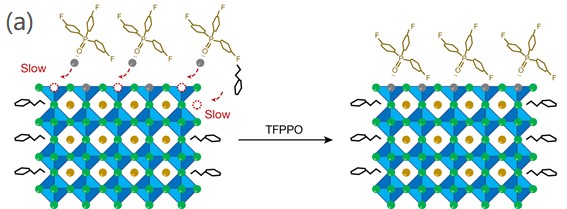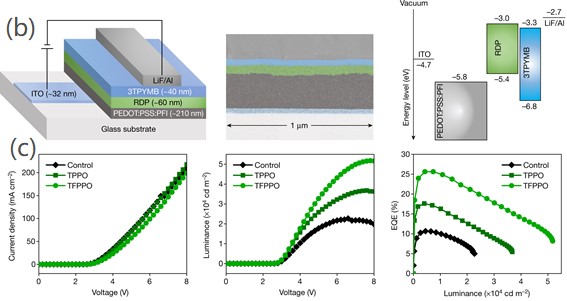Assistant Prof. Wu Dan from College of New Materials and New Energies, Shenzhen Technology University (SZTU), together with research groups from the University of Toronto and Huaqiao University, published an article titled “Distribution control enables efficient reduced-dimensional perovskite LEDs” in Nature (Q1, IF:49.962) on November 24 with himself as the sixth author and SZTU as the third affiliation. It’s the first time for SZTU to be one of the affiliations in Nature. The full text of the article can be found at: https://www.nature.com/articles/s41586-021-03997-z.
During the research work, Assistant Prof. Wu Dan focused on the optical modeling and the qualitative and quantitative analysis of the power transmission and dissipation channels for reduced-dimensional perovskites (RDPs) LEDs; conducted decoupling analysis of multiple factors that affect external quantum efficiencies (EQEs); analyzed the mechanism and scope of the core influencing parameters; revealed the transmission mechanism and multiple dissipation channels of light energy in the functional layer; and analyzed the recombination center location in the active layer and clarified its influence on EQEs.
Metal-halide perovskites hold promise in solar cell, laser, photodetector and light-emission applications due to their features of structural diversity, a tunable bandgap, saturated emission colors, superior luminescence efficiencies, low-cost solution processing and high charge mobilities. The research proposed the surface passivation of RDPs — distribution control strategy, which greatly increases the EQEs of RDPs.


(a) Surface passivation — distribution control strategy; (b) Device structure (left), cross-sectional TEM image (middle) and energy band diagram (right); (c) Current density versus voltage (left), luminance versus voltage (middle) and EQE versus luminance (right) curves. [Photo/www.nature.com]
This latest research results in compact, smooth and uniform RDP thin films with a peak emission wavelength of 517 nm, full-width at half-maximum (FWHM) of only 20 nm and photoluminescence quantum yield close to 100%. It enables LEDs with an EQE of 25.6% and an operating half-life of two hours at an initial luminance of 7,200 candela per metre squared, indicating tenfold-enhanced operating stability relative to the best-known perovskite LEDs.
Drafted by Daisy(姚琦)/ International Cooperation & Student Affairs Office
Revised by International Cooperation & Student Affairs Office
Edited by International Cooperation & Student Affairs Office
